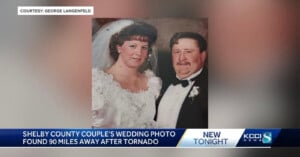
Couple Reunited With Wedding Photo Blown 90 Miles Away by Tornado
A couple has been reunited with their wedding photo after a tornado blew it 90 miles to a location two counties over in Iowa.

A couple has been reunited with their wedding photo after a tornado blew it 90 miles to a location two counties over in Iowa.
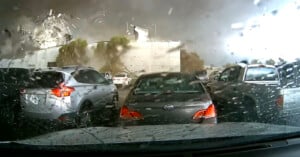
In a shocking dashcam video, footage shows a tornado's path of destruction.
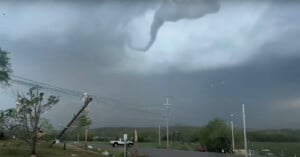
A storm chaser has captured what he calls the "most insane tornado video ever captured in Westmoreland, Kansas."
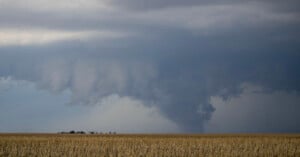
A train conductor in Nebraska recorded a harrowing video from the middle of a tornado hit.

A generous photographer is restoring treasured photos that were destroyed by the devastating tornados in Tennessee at absolutely no cost.
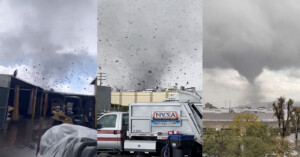
An extremely rare tornado has battered part of Los Angeles with video footage showing debris flying through the air.
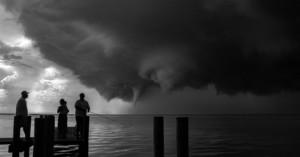
Photographer Casey Robertson captured a dramatic waterspout off the coast of Ocracoke Island, North Carolina, a set of pictures he had waited "years" to capture.
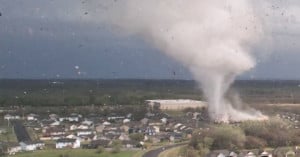
A drone managed to stay aloft while it recorded the colossal damage caused by a tornado that devastated a Kansas neighborhood last Friday.
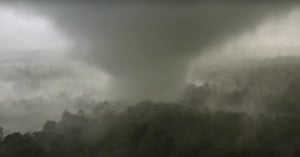
Storm chaser Brian Emfinger was shooting aerial footage of a tornado near Yazoo City, Mississippi when it moved towards him and his drone. While the footage is incredible, Emfinger says the storm "nearly got" him, and his drone was lost.
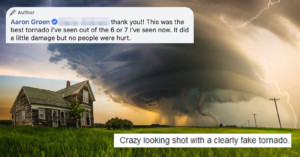
South Dakota photographer Aaron Groen is under fire from the storm chasing community this morning after a photograph of his went viral on Facebook. Groen says the photo shows "the best tornado I've seen," describing how the raw files from the shoot still scare him. However, seasoned photographers and storm chasers alike are claiming that it's "clearly fake."
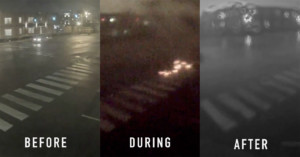
A security camera in the heart of Nashville, TN somehow managed to survive a direct hit from the devastating EF3 tornado that ripped through the city on March 3rd. The resulting footage is eye-opening.

Videographer Adam Grumbo was shooting a wedding in Austin, Texas, recently when a flash flood and tornado crashed the festivities and turned things upside down.

When a tornado touched down near Sulphur, Oklahoma, yesterday, storm chaser Brandon Clement of WxChasing launched his 4K camera drone and flew it toward to the tornado. This incredible 4-minute video is what resulted from his efforts.
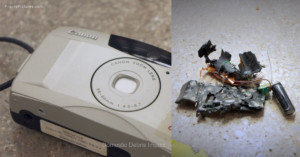
Storm-chasing photographer and filmmaker Martin Lisius wanted to demonstrate the danger of flying debris in a tornado, so he got scientists to fire a camera out of a tornado projectile test cannon at 264mph. As you can see from the 1.5-minute video above, the camera doesn't fare too well.
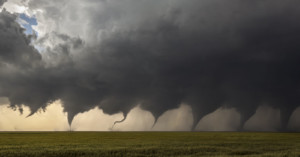
Storm chasing photographer Jason Weingart shot a series of time-lapse photos of a tornado forming in Kansas back in 2016. Afterward, he selected eight of the frames and created this composite photo titled "Evolution of a Tornado."
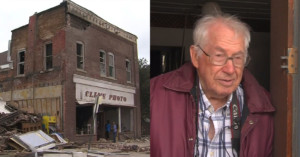
An EF-3 tornado ripped through Marshalltown, Iowa, last Thursday, and one of the victims of the disaster was a 92-year-old photographer named Harold Cline. After seeking shelter from the storm, Cline returned to his work to find that his 65-year-old business had been destroyed.
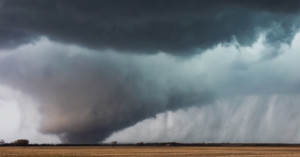
It's extremely difficult to predict when and where a tornado will form and touch down, so stormchasing photographers rely on long days of chasing and waiting for luck. But luck is exactly what Mike Olbinski met with recently: he captured a tornado forming and touching down while shooting a timelapse.
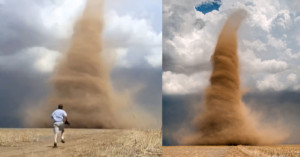
This week marks the 10th anniversary of one of the most memorable, satisfying and career-changing days as a professional extreme-weather photographer.
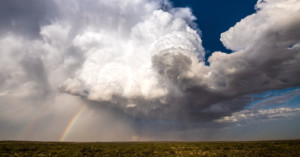
Time-lapse photographer and storm chaser Mike Olbinski has just released his latest masterpiece. This one, titled "Pursuit," was born of dedication, frustration, and 28,000 miles of chasing thunderstorms and tornadoes.
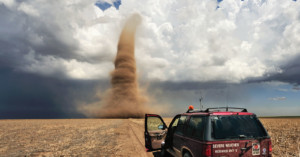
I’ve been photographing extreme weather for 25 years. After publishing tips on how to photograph lightning here back in March, I was asked to share any tips I have in capturing an award-winning tornado image. So, here I go…
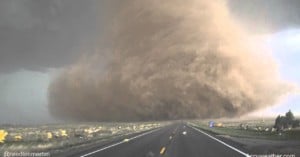
Incredible... and terrifying. Last year, extreme storm chaser Reed Timmer got up close and personal with an EF-2 tornado outside of Wray, CO, and captured 4K footage of the twister that will leave you slack-jawed.
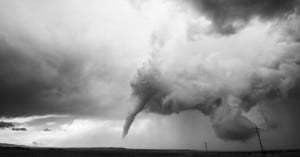
Storm chasing photographer Mike Olbinski is known for his gorgeous time-lapse films of thunderstorms, tornadoes, and monsoons. His latest project, however, was a bit different from the rest: it's one of the first storm time-lapse films to be entirely black and white.

"Vorticity" is a new time-lapse short film by Mike Olbinski, a storm-chasing wedding photographer based in Phoenix, Arizona. Olbinski spent 18 days driving 20,000 miles across 9 states and shooting 60,000 frames to create what you see in the 6-minute video above.
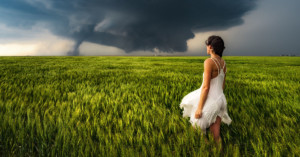
Mother Nature can be such a beautiful and powerful phenomena to watch, and if you’re not careful, you can quickly become addicted to it. That’s my problem: I’m addicted, and I have been for a long time now.
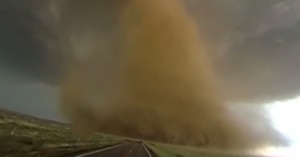
360° video and virtual reality headsets have made it possible to experience situations you would never in a thousand years want to see first-hand, and high on that list is driving up to or getting steamrolled by a powerful tornado.
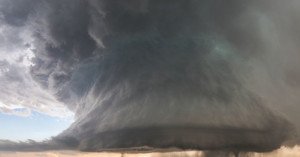
A powerful storm rumbled by Simla, Colorado, last week, and at the scene was professional storm-chasing photographer Kelly DeLay, who captured this "shot of a lifetime" showing a massive supercell storm cloud extending twin tornados to the ground below.
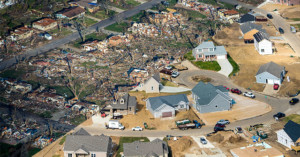
div.juxtapose {
max-width: 640px !important;
margin-bottom: 50px !important;
}
Back in November 2013, an EF4 tornado tore through Illinois, killing several people and destroying hundreds of homes. Photojournalists at the Journal Star in Peoria, Illinois captured numerous photographs documenting the devastation from both the ground and the air.
Last month, at the one year anniversary of the disaster, those same photojournalists went out and rephotographed those same scenes. The resulting before-and-after photos document the process the community has made in rebuilding their lives.
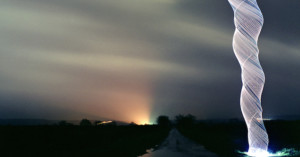
When we say something is a "spin" or "twist" on an old classic, we usually don't mean it literally. But when it comes to the light painting photography of Martin Kimbell, he really did put a new spin on light painting with his creative light 'tornadoes.'
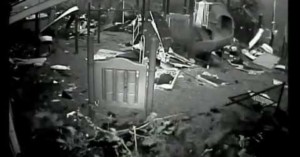
Want to see what it's like to be inside a tornado? Check out this eye-opening footage captured by a security camera at St. Luke's United Methodist Church in Tupelo, Mississippi. Things go from relative calmness to chaos and destruction in a matter of minutes.

In an effort to document the intense and widespread damage of the tornados that ripped through Arkansas this past week, storm chaser and videographer Brian Emfinger made use of a drone, flying it above the damage and rescue efforts to bring to light just how bad the damage was. Unfortunately for Emfinger, the Federal Aviation Administration may have an issue with his drone use.